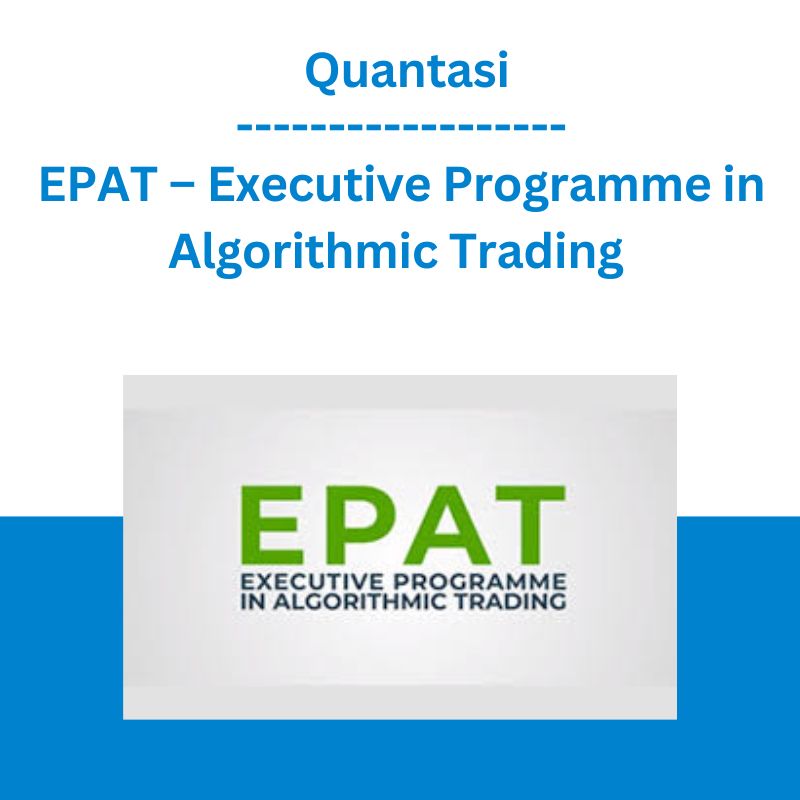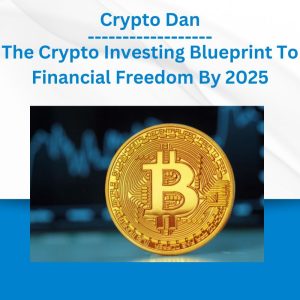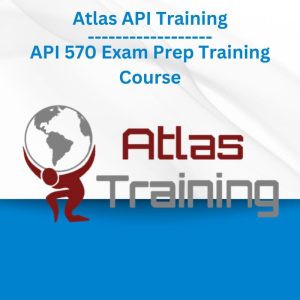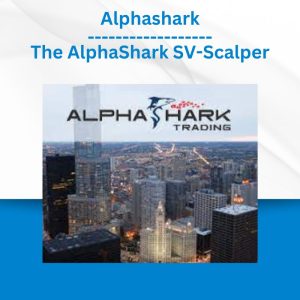*** Proof of Product ***
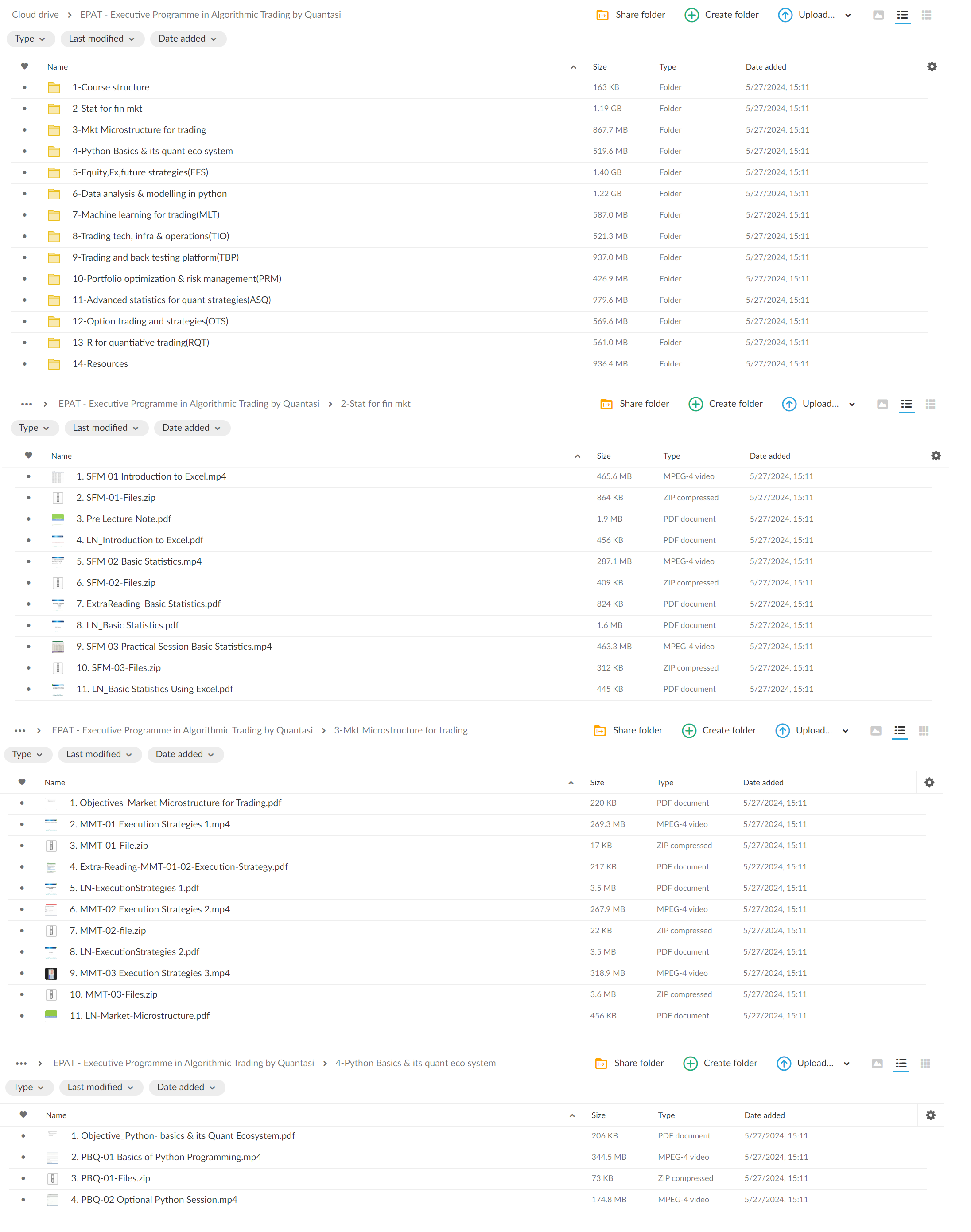
Exploring the Essential Features of “Quantasi – Executive Programme in Algorithmic Trading EPAT”
Executive Programme in Algorithmic Trading – EPAT®
An Algo Trading Course with Lifetime Placement Assistance
Are you looking to get a new job, start your own trading desk, or get better opportunities in your current organization? EPAT is a top algo trading course for those seeking career growth in algorithmic and quantitative trading. Access the most comprehensive quant trading curriculum, learn from world-class faculty, and receive personalized support for specialization in asset classes and trading strategies with live project mentorship.
COURSE BENEFITS
World-Class Faculty
Learn from the best in the industry
CURRICULUM
1 EPAT Primer
- Basics of Algorithmic Trading: Know and understand the terminology
- Excel: Basics of MS Excel, available functions and many examples to give you a good introduction to the basics
- Basics of Python: Installation, basic functions, interactive exercises, and Python Notebook
- Options: Terminology, options pricing basic, Greeks and simple option trading strategies
- Basic Statistics including Probability Distributions
- MATLAB: Tutorial to get an hands-on on MATLAB
- Introduction to Machine Learning: Basics of Machine Learning for trading and implement different machine learning algorithms to trade in financial markets
- Two preparatory sessions will be conducted to answer queries and resolve doubts on Statistics Primer and Python Primer
2 Statistics for Financial Markets
- Data Visualization: Statistics and probability concepts (Bayesian and Frequentist methodologies), moments of data and Central Limit Theorem
- Applications of statistics: Random Walk Model for predicting future stock prices using simulations and inferring outcomes, Capital Asset Pricing Model
- Modern Portfolio Theory – statistical approximations of risk/reward
3 Python: Basics & Its Quant Ecosystem
- Data types, variables, Python in-built data structures, inbuilt functions, logical operators, and control structures
- Introduction to some key libraries NumPy, pandas, and matplotlib
- Python concepts for writing functions and implementing strategies
- Writing and backtesting trading strategies
- Two Python tutorials will be conducted to answer queries and resolve doubts on Python
4 Market Microstructure for Trading
- Overview of Electronic and Algorithmic Trading.
- Various order types, order book dynamics, Spoofing, Price Time Priority Algorithm and Guerilla Algorithm.
- Execution strategy to trade large volumes.
- The algorithmic trading process from a market microstructure perspective.
5 Equity, FX, & Futures Strategies
- Understanding of Equities Derivative market
- VWAP strategy: Implementation, effect of VWAP, maintaining log journal
- Different types of Momentum (Time series & Cross-sectional)
- Trend following strategies and Statistical Arbitrage Trading strategy modeling with Python
- Arbitrage, market making and asset allocation strategies using ETFs
6 Data Analysis & Modeling in Python
- Implement various OOP concepts in python program – Aggregation, Inheritance, Composition,
- Encapsulation, and Polymorphism
- Back-testing methodologies & techniques and using Random Walk Hypothesis
- Quantitative analysis using Python: Compute statistical parameters, perform regression analysis, understanding VaR
- Work on sample strategies, trade the Boring Consumer Stocks in Python
- Two tutorials will be conducted after the initial two lectures to answer queries and resolve doubts about Data Analysis and Modeling in Python
7 Machine Learning for Trading
- Decision Trees, Support Vector Machine, Neural Networks, Forward propagation, Backward propagation, Various neural network architectures.
- Building a “Principal Component Analysis” manually, conducting a pairs-trading back-test using PCA,
- Simulation of multiple co-integrated assets, and Sector statistical arbitrage using PCA.
- Using Python and Jupyter notebooks to create features, evaluate models, use feature selection and test raw performance.
- Overview of Alternate Data: Sources, data formats, storage and retrieval choices, Understanding RDF and Knowledge Graph, Tagging Unstructured Data with relevant metadata.
- Using spaCy for common Text processing tasks, Understanding Topic Modeling and Topic Classification.
- Understanding Machine Readable News Programmatic consumption of news.
- Machine Readable News in the Financial Industry: Sample in Production use cases, Sentiment Data in the Financial Industry: Sample in Production use cases.
- Basic ideas of deep reinforcement learning such as reward, explore/exploit, Bellman equation and memory replay.
- Challenges and problems with RL in trading, Implementation of RL in a simple strategy using “gamification”.
8 Trading Tech, Infra & Operations
- System Architecture of an automated trading system
- Infrastructure (hardware, physical, network, etc.) requirements
- Understanding the business environment (including regulatory environment, financials, business insights, etc.) for setting up an Algorithmic Trading desk
9 Advanced Statistics for Quant Strategies
- Time series analysis and statistical functions including autocorrelation function, partial autocorrelation function, maximum likelihood estimation, Akaike Information Criterion
- Stationarity of time series, Autoregressive Process, Forecasting using ARIMA
- Difference between ARCH and GARCH and Understanding volatility
10 Trading & Back-testing Platforms
- Introduction to Interactive Brokers platform and Blueshift
- Code and back-test different strategies on various platforms
- Using IBridgePy API to automate your trading strategies on Interactive Brokers platform
- Interactive Brokers Python API
11 Portfolio Optimization & Risk Management
- Different methodologies of evaluating portfolio & strategy performance
- Risk Management: Sources of risk, risk limits, risk evaluation & mitigation, risk control systems
- Trade sizing for individual trading strategy using conventional methodologies, Kelly criterion, Leverage space theorem
12 Options Trading & Strategies
- Options Pricing Models: Conceptual understanding and application to different strategies & asset classes
- Option Greeks: Characteristics & Greeks based trading strategies
- Implied volatility, smile, skew and forward volatility
- Sensitivity analysis of options portfolio with risk management tools
13 Hands-on Project
- Self-study project work under mentorship of a domain/expert
- Project topic qualifies for area of specialization and enhanced learning
14 EPAT Exam
EPAT exam is conducted at proctored centers in 80+ countries
Please see the full list of alternative group-buy courses available here: https://lunacourse.com/shop/

